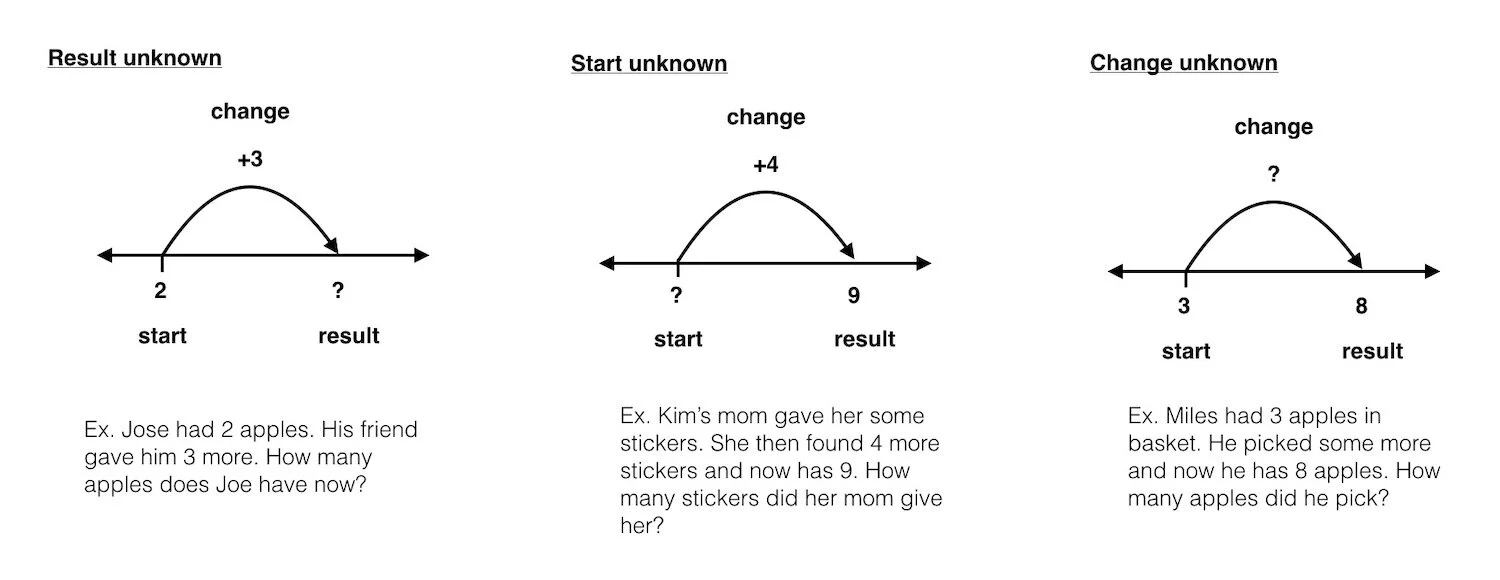Word problems are at the heart of mathematics; and yet, mathematical problem solving is one of the most challenging topics for students and teachers alike. What does research say about the best ways to teach word problems?
One strategy shown to improve students’ problem solving is focusing on the underlying structure of word problems (Fuchs et al., 2004; Jitendra et al., 2013; Gersten et al., 2009).
Schema-based instruction (SBI) teaches students to identify the schema of a problem, or the organizing structure, and use appropriate visual models (e.g. diagrams, graphic organizers, equations) to help solve the problem. The first step, however, is being able to determine what type of problem students are solving and then being able to figure out what part is missing.
There are 4 different types of schema involved in addition/subtraction word problems:
Each of these schema represent a different type of scenario or action that is occurring. We can help students identify and distinguish between these schema by using different visual representations or graphic organizers that model each situation.
Let’s look more closely at the Add to schema. Within this type of problem, there are 3 different possible unknowns: start, change or result unknown. Here are examples of each of these:
Getting students to understand what is happening in a word problem and be able to represent the problem using a visual model, like the open number lines above, is key to improving their mathematical problem solving.
Practice using this graphic organizer for Add to word problems with your students. Laminate the organizer, so students can easily write on and reuse it.
Click for some sample Add to word problems to use with your students.



